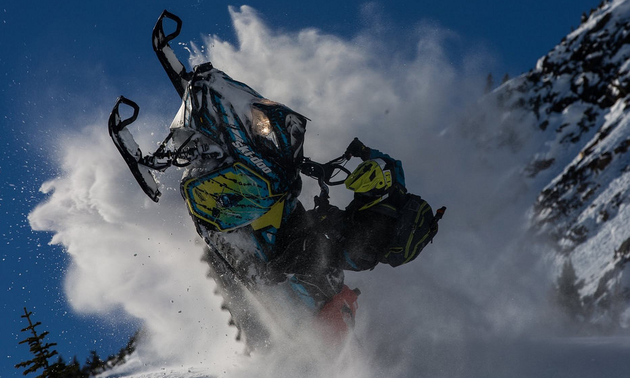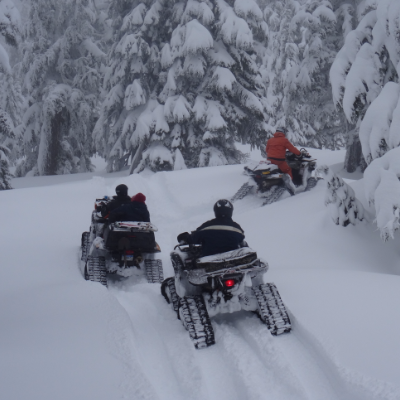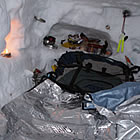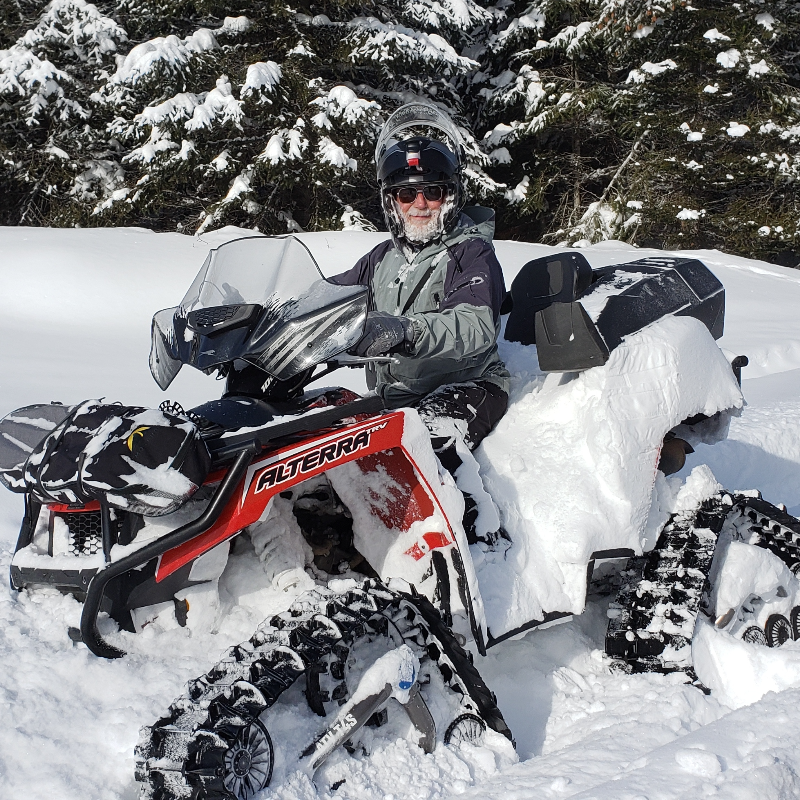Cool decoration around your neck!
Most sledders have started carrying beacons, probes and shovels. While this is an obvious improvement, this gear is giving many riders a false sense of security. Imagine standing in the debris field of an avalanche with multiple people buried. Your racing thoughts are clouding the ability to be decisive and take effective action. Time is everything. The goal is to save as many lives as possible. Without hesitation you need to draw on the right skills and the right tools for the greatest chance of success.
If you are not fully confident with all the functions of your beacon you are not a dependable rescue team member. Not only will you miss valuable information the transceiver is trying to tell you, you will not have the capacity to open your focus up to the wide angle view of the rescue. While half your focus is on the gear, the other half is very likely lost in panicked confusion. Some inexperienced rescuers simply freeze.
The picture above only shows a fraction of the beacons available on the new and used market today. Take care: some of these beacons are considered obsolete by the Canadian Avalanche Centre. CLICK HERE to see if your beacon has the obsolete features noted in this list.
No matter what beacon you own YOU MUST PRACTICE! A tool is only as good as the operator.
There is always a trade-off between price, ease of use, range, special functions, upgrade-ability and reliability. Take an avalanche course or customized rescue workshop to identify the strengths and weaknesses of your beacon. Decide if it is time to upgrade. Learn strategies to find multiple signals close together. ALWAYS practice finding more than one. Is it better for everyone in your group to use the same beacon model? CLICK HERE to learn Zac’s opinion.
If, God forbid, you ever have to use your skills in a real search, you want to have set yourself up with tough scenarios so that the real deal seems straightforward and easy. CLICK HERE to read what snowmobilers have to say about avalanche training.
Realize that the beacon search is really a small part of a whole series of rescue tasks and decision points.
Get training from a professional. The user manual is a good place to start, but a professional searcher can tweak your techniques to save time and stress.
Be sure to gather your group multiple times in the season to run rescue scenarios to see how everyone works together. A well-managed team is much more effective than a bunch of individuals.
This isn't a movie. There are no retakes. Practice makes perfect.







